‘From the Carpathians to the Black Sea –
Romantic Travels on the Lower Danube
(1800-1940)’
(Selected and introduced by Constantin Roman)
RADIOGRAPHY OF THE PROJECT
This is a project which is sourced from two private collections:
1. One source provides the TEXT from a collection of several hundred antiquarian and modern travel books on the Romanian Principalities of Wallachia, Moldavia and Transylvania. These books provide the excerpts from 18th century to 20th century mostly English texts, or texts translated from French or Romanian. The narratives were researched to extract the relevant chapters or paragraphs referring to travelers’ impressions on their Danube journey. In addition to the Lower Danube ports some travellers visited also two main land destinationa – MEHADIA Baths of Roman fame and BUCHAREST, the exotic capital of Wallachia, some 30 miles (50 Kms) North of the port of GIURGIU.
As a rule the original orthography of both place names and vocabulary was preserved. These excerpts are intended to accompany the illustrations from the second source:
2. A Collection of 500 antique engravings of central-eastern Europe (16th century to 19th century):
http://www.constantinroman.com/pages/interests.html
This is an area covering parts of the former Ottoman, Russian and Habsburg empires, with a special focus on the historic regions of Wallachia, Banat, Transylvania, Moldavia, Bukovina, Bessarabia, Black Sea and the Lower Danube.
These engravings could be historic maps, or showing views, architectural monuments, costumes, military battle scenes, battle plans, uniforms, costumes, transport, traditions, historical portraits or political cartoons.
Some Distinguished Travellers: to mention only a few, would be Lady Mary Wortley Mantagu, the Bishop of Aleppo, Count Alexander Demidoff, Sir Samuel Baker, Gordon of Khartoum (former British Consul at Galatz), Sir Samuel Baker and in the 20th century Satcheverel Sittwell and Patrick Leigh Fermor.
Some distinguished artists: Theodore Aman, Bartlett, Pierre Francois Basa, Bouquet, Cham, Daumier, Heath, Auguste Alexandre Hirsch, Lancelot, WH P.F. Preziosi, Raffet, Schlotterbeck, William F. Sorrieu, Tardieu, Turner, Valerio, Emile-Louis Vernier, Claude Vignon.
Notable Cartographers: Castaldo, De Fer, La Feuille, Hondius, Homann, Lotter, Mercator, Merian, Munster, Moll, Ortelius, Probst, Ruscelli, Schenk, Sanson, Stackhouse, Valk, Winter .
Further reading about the Collection:
http://www.constantinroman.com/pages/interests.html
SAMPLE PAGES
Byron’s Childe Harold – an Ode to the Heroic Dacians:
He heard it, but he heeded not – his eyes
Were with his heart, and that was far away;
He reck’d not of the life he lost, nor prize,
But where his rude hut by the Danube lay,
There were his young barbarians all at play,
There was their Dacian mother – he, their sire,
Butchered to make a Roman holiday.
Picture showing the cartouche of a 17th centrury English Map of Dacia dedicated to the Duke of Gloucester: interest in Roman history and antiquities was strong in England especially since the Restoration of Charles II, followed by the 18th century Grand Tours of Italy by members of the aristocracy. This tradition was further enhanced during the Romantic period by Lord Byron, encouraged by the Wallachian Phanariote Prince Alexandre Mavrocordato (1791-1865).
• Babakai – Solemn vultures with great majesty:
“On the Babakay itself sat three vultures, solemnly looking on at these accustomed sights, while on the Servian side nothing was to be seen, save the picturesque towers of the Golumbatz as they crumbled away into the Danube below.
One of the vultures, as we drew near, raised itself from its rocky perch, and sailed into the air with great majesty. A shot from one of our party brought him down to the water, while another secured on of his companions before he had time to raise himself and take flight. The larger of them measured nine feet across the wings.”
(Paget, 1850)
• Golumbac – Prison of Greek Empress Helena
 Golumbatz, – a corruption of columba, the castle of the dove, – it is said to have been the prison of the Greek empress Helena, and was a point often strongly contested in the earlier periods of Hungarian history. In 1428, it was besieged by King Sigismund, who lost the greater part of his army in the attempt, and who with difficulty escaped with his own life. It was afterwards taken from the Turks by Corvinus, and held by the Hungarians, together with other fortresses in Servia, for some time.
Golumbatz, – a corruption of columba, the castle of the dove, – it is said to have been the prison of the Greek empress Helena, and was a point often strongly contested in the earlier periods of Hungarian history. In 1428, it was besieged by King Sigismund, who lost the greater part of his army in the attempt, and who with difficulty escaped with his own life. It was afterwards taken from the Turks by Corvinus, and held by the Hungarians, together with other fortresses in Servia, for some time.
(Fielding-Edwards, L., 1940)
• Tablet of Trajan – The most perfect historical monument on the banks of the Danube.
… we arrived at the great Tablet of Trajan, the most perfect historical monument at present existing on the banks of the Danube. … It is cut in the solid rock, a fine hard mountain limestone, and is executed with much elegance. A winged genius on each side supports an oblong tablet protected by the overhanging rock, which has been carved into a rich cornice, surmounted by a Roman eagle. At either end is a dolphin. The inscription as it has been made out by the engineers runs thus – IMP CAESAR DIVI NERVAE F NERVA TRAIANUS AUG GERM PONTIF MAXIMVS TRIB P O XXX
… The work which this tablet is intended to immortalize, was no other than the Via Trajana, as it is called, one some of the Roman coins of the period, and of which the traces are frequently visible on different parts of the rocks between Goulmbatz and Orsova… (Paget, 1850)
• ‘Imperator Caesar – overcame the hazards of mountain and river and flung open this road’
* (‘Imperator Caesar divi Nervae filius, Nerva Trajanus Augustus Germanicus – Pontifex Maximus tribunitae potestatis quartum – Paterpatriae consul quartum – montis et fiuviis anfractibus – superatis viam patefecit’. ‘The Emperor Caesar –son of the divine Nerva – Nerva Trajan Augustus Germanicus – High Priest and for the fourth time Tribune – Father of the country and for a forth time Consul – overcame the hazards of mountain and river and flung open this road’).
(Patrick Leigh-Fermor, 1980)
• ADAKALEH Island – the greatest tourist attraction of the Danube:
Nevertheless it is still the greatest tourist attraction of the Danube, a tiny Garden of Eden, just below the famous Kazan gorge and within sight and sound of the Iron Gates. Its minaret and its slender cypresses would scarcely be remarked in Bosnia or Bulgaria, are here strange and exotic. The easy leisured life of its inhabitants is in striking contrast to the perpetual struggle of the Romanian cities nearby or to the peasant conservatism of the villages. There is a feeling of old Turkish yavashluk about it, though the roses and the nightingales of oriental song are replaced here by vines and fish eagles. Ada Kaleh lives on the tourist as much as Brighton or Biarritz, but it does so in an easy and dignified manner. There are touts, of course, but the staid Moslem shopkeepers leave that to the children and discuss their wares gravely and courteously. That is never lacking in the east.
(Fielding-Edwards, 1940)
• These people are not so unpolished as we represent them:
. . . Thus you see, Sir, these people are not so unpolished as we represent them. It is true their magnificence is of a different taste from ours, and perhaps of a better. I am almost of opinion they have a right notion of life; while they consume it in music, gardens, wine, and delicate eating, while we are tormenting our brains with some scheme of politics or studying some science to which we can never attain, or if we do, cannot persuade people to set that value upon it we do our selves. It is certain what we feel and see is properly (if any thing is properly) our own; but the good of fame, the folly of praise, hardly purchased, and when obtained–poor recompense for loss of time and health! We dye, or grow old and decrepit, before we can reap the fruit of our labours.
[Lady Mary Wortley Montague (1718)]
• Orsova – the most beautiful women I have ever beheld:
After coffee we rose from the table, and the Count and I walked to the Lazaretto, a clean airy building, about a mile from Orsova. As he was about to go to Bucharest, and on his return from Wallachia would be obliged to perform quarantine in that edifice, he was desirous of examining the apartments which he was destined to occupy. We found the establishment in excellent order, clean, healthy, and very pleasantly situated. The wife of its medical superintendent was one of the most beautiful women I have ever beheld. She was sitting alone at a window, melancholy as if she were a captive; and indeed, as she observed to the Count, how could she be otherwise, exiled as she was in this solitude from every chance of society? She was pale and downcast; her voice came in touching tones from her heart; and though she brightened up a little while we were speaking to her at the easement, the unusual lustre of her black eyes indicated that her health was deeply undermined by consumption. She spoke French very well, and the Count informed me that she was an intelligent and accomplished woman, but the solitude of the place had broken down her spirits.
(Quin, 1836)
• The resemblance of the Wallack peasants to the Dacians of Trajan’s column
As we turned from these remains of Roman greatness to the other side of the river, and again got on shore, to examine the progress they were making with the modern road, it was impossible not to be struck with the resemblance of the Wallack peasants, who were engaged on it, to the Dacians of Trajan’s column. The dress, the features, and the whole appearance of the Wallacks, were so Dacian, that a man fresh from Rome could scarcely fail to recognise it. They have the same arched nose, deeply sunken eye and long hair, the same sheepskin cap, the same shirt round the waist, and descending to the knee, and the same loose trowsers which the Roman chain is so often seen encircling at the ankles. … we might have supposed ourselves present at the very scene enacted for a similar purpose on the opposite side of this river seventeen hundred years before.
(Paget, 1850)
Danube Right Bank: Russe/Rustchuk (Bulgaria)
At half-past three we came in sight of Rutschuk, to my infinite satisfaction, and in two hours after our boat was moored amidst a number of Russian, Turkish and Greek merchant and fishing vessels of every size, which presented an appearance of considerable commercial activity.
… When first I beheld Rutschuk at a distance with its numerous mosques and minarets shining in the sun, rising on a bold promontory from the edge of a vast expanse of waters formed by the Danube, I felt confident that it was a wealthy, populous, active, cleanly, and handsome city, which I should experience great gratification in examining. Never was my imagination more deceived. A more poverty-stricken, deserted, idle, filthy, ill-contrived town does not exist, I believe, even in Turkey.
- Rustchuk/Russe – Right Bank of the Danube (Bulgaria)
(Quin ,1836)
Giurgevo derived its name from San Giorgio, the patron Saint of Genoa.
Genoese merchants drove a good trade in velvets and silks with the luxurious nobles, who were always noted for their love of fine clothes, and the Roumanian town of Giurgevo derived its name from San Giorgio, the patron saint of Genoa.
(Miller, 1896)
The village of Georgiova – on the verge of Christendom:
A beautiful moonlight accompanied us to the last Wallachian post-house, about an hour’s drive from the Danube and the Bulgarian frontier. Here we were shewn the spot, where the Russians had formed a considerable encampment, during the last war with the Turks, and on the adjoining steppe, were told, there had been some hard fighting. The lofty minarets of the mosques, and the turbaned inhabitants of the village of Georgiova, who surrounded us as we reached the left bank of the Danube, early in the morning of the 24th of January, announced that we were on the verge of Christendom.
(MacMichael 1817)
Ottoman-Russian Battle of Kalafat:
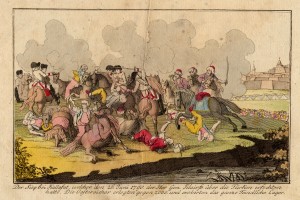
Austrian-Ottoman Battle of Calafat, 26 june 1790, during which the Habsburg Commander Count Kolowrat-Liebsteinsky distinguished himself by leading his battalion on foot to storm the Turkish redoubt on the left bank of the Danube
Russian-Ottoman Battle of Kalafat:
The Turkish pashas must have been assured that if the three advancing corps were to unite at Kalafat, under Gortschakoff, the chances of maintaining themselves at Kalafat in the face of such an army were greatly lessened; and to maintain Kalafat was worth great sacrifice, for it was the only place the Turks had on the northern shore of the river, and so long as they held it, the Russian possession of Wallachia was threatened in a manner to disturb its security. (Nolan, 1857)
Constantin Roman © 2000-2009. All Rights Reserved.




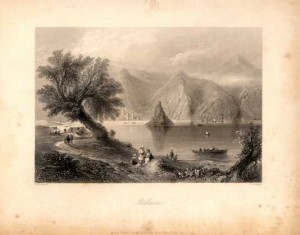
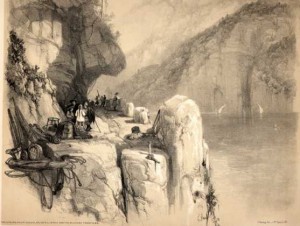
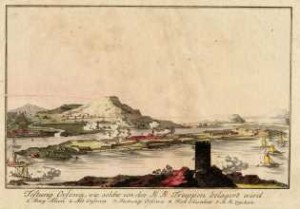
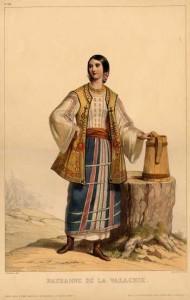
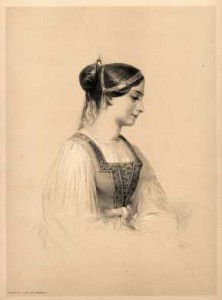
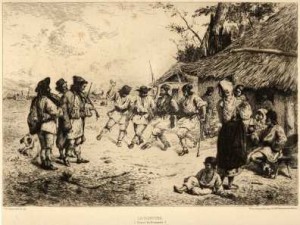
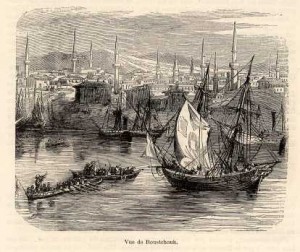
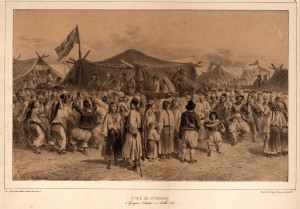
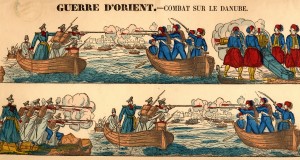

Fascinating! More, please. Perhaps more literary references with commentary: Shakespeare’s reference to Transylvania in an early comedy, Moldavia in The Knight of the Burning Pestle, Chaucer’s knight who has ben in Wallachei as a mercenary, an so on.
Chris Lawson,
I am afraid editors in Romania are neither keen nor equipped to publish and market this kind of books: the are instead focussing on projects by a cabal of pals, all ‘budding talents’ albeitpart of the old guard gerontocracy
Romania Unadulterated: Book Review – Bread, Salt & Plum Brandy by Lisa Fisher Cazacu // Sep 11, 2010 at 7:24 am
[…] http://www.romanianstudies.org/content/2009/04/romantic-travels-on-the-lower-danube-1800-1940/ […]